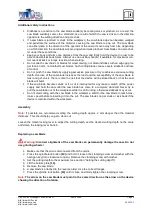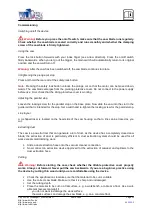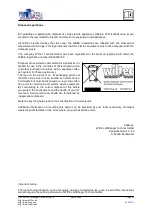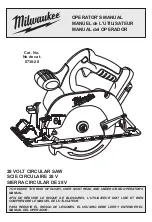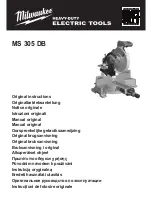
Plasterboard
The saw is only recommended for occasional cuts in plasterboard; a suitable vacuum cleaner
should always be switched on. This is because the dust can prevent the protective device
from properly working.
Conventional tools such as hole saws or knives usually give excellent results; however, the
saw can be used when a particularly clean, dust-free cut is required or when there is a risk of
pipes or cables being cut.
Cleaning and maintaining the device
Regular cleaning is required to operate the saw safely as excessive build-up of dust will cause the tool
to stop working properly.
Pull out the power plug.
Thoroughly clean the saw with a small, soft brush, such as a paintbrush.
Always keep the ventilation openings on the motor housing clean and free of foreign objects.
Never use caustic or solvents to clean the plastic parts.
Saw blade
Always use a sharp saw blade.
If the saw does not cut as well as expected, or if it overheats (temperature cut-off can be activ-
ated), the most common cause is a dull saw blade.
It is difficult to see or feel if the saw blade is blunt. If there is any doubt, use a new saw blade.
Saw blades are consumables.
Be careful when changing the saw blade, as a saw blade can get hot during use. Let the saw
blade cool down for a while before replacing it.
Store the saw in a dry area when not in use.
Technical specifications
Nominal voltage
(V)
220–240
Nominal frequency
(Hz)
50
Nominal power
(W)
600
Motor speed
(rpm)
7400
Saw blade diameter
(mm)
85
Max. cutting depths
(mm)
Wood
25
Stone/tiles
10
Flange diameter
(mm)
25×10
Sound pressure level L
pA
(dB (A))
96
Caution!
Wear a hearing protection in
case the sound pressure exceeds
85 dB (A).
Incertitude value K
pA
(dB (A))
3
Sound power level L
WA
(dB (A))
107
Incertitude value K
WA
(dB (A))
3
The noise emission values have been measured according to the relevant standard.
© by WilTec Wildanger Technik GmbH
Item 62554
Page 12
http://www.WilTec.de
http://www.aoyue.eu
04 2021
-1









